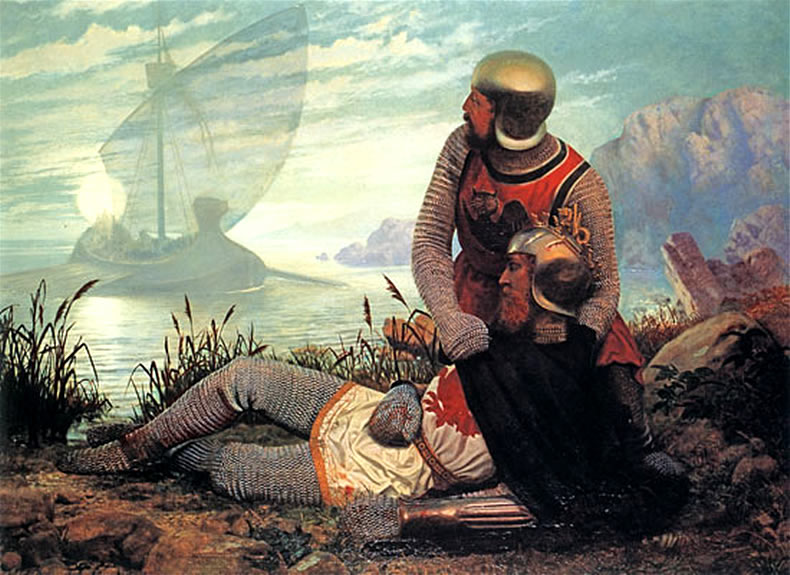The Demise of the Round Table in Thomas Malory’s King Arthur and His Knights
By Emma Walsh
In the final story of Thomas Malory’s King Arthur and His Knights, the reader observes the demise of the Round Table, a symbol of the courtly values and honor system of the Middle Ages. Malory’s writing turns full-circle, as he tells the story of King Arthur’s rise and then his eventual downfall. The impetus for the ruination of the Round Table is a divide over loyalty to King Arthur and loyalty to Lancelot; the knights are conflicted between maintaining their sworn fealty to their lord and acknowledging the honor and acclaim that Lancelot has won for himself, a debate sparked when Agravain wishes to disclose Lancelot and Guinevere’s relationship to the king.
On page 173, Arthur laments “for now have I lost the fairest fellowship of noble knights that ever held Christian king together. Alas, my good knights be slain and gone away from me, and now within this two days I have lost nigh forty knights, and also the noble fellowship of Sir Lancelot and his blood, for now I may nevermore hold them together with my worship”. The lack of loyalty and brotherhood — courtly values — between the knights results in battle, death, and separation. Arthur loses his followers and fears battle with Lancelot. On page 181, however, we see a vestige of the loyalty and honor that characterize the formerly revered values of the court, when Lancelot declares that no one should harm Arthur, claiming that he “…will never see that most noble king that made me knight neither slain nor shamed”. In a sense, Arthur is the last remnant of this nobility and courtly values, and the Round Table can not completely fall while Arthur still lives.

Painting by John Garrick c. 19th century
The Round Table is further diminished, however, when Lancelot, the most honorable and loyal of knights, is dishonored and banished by Gawain and Arthur. As Gawain swears that he will forever hold a grudge against Lancelot, Lancelot exclaims, “…I shall depart with no worship, for a fleamed man departeth never out of a realm with no worship” (190). Lancelot loses all hope of reconciliation with Arthur, and the Round Table is fully disbanded. Then, later in the story, Arthur is mortally wounded, carried away by the lady of the lake, and presumed dead — a scene that is depicted in the painting above. These two pillars of courtly values have been defeated, and the age of King Arthur can never recover. Finally, at the very end of the story, Lancelot also dies. The previously undefeatable knight is defeated, no longer able to uphold the honor and virtue of the court.
Through the entirety of King Arthur and His Knights, and most particularly in The Death of Arthur, the entire concept of Victorian Medievalism is exemplified. There is a constant search for meaning, virtue, and the correct way of living. There is an appreciation for the past, but, as we see, an acknowledgement that all things must come to an end. Although this is a medieval text, written before the Victorian Era, the themes explored are deeply relevant to the area of study. There is a sense of growth and decay, the rise and fall of civilizations and the constant march of progress. Values change, rulers die, and societies progress. While Arthur and Lancelot attempt to uphold the courtly values, they are unable to prevent change from occurring, much in the same way that modern readers can study and admire medievalism, yet never fully reconstruct or relive it.
Art credits: https://www.worldhistory.org/image/6645/the-death-of-king-arthur/





